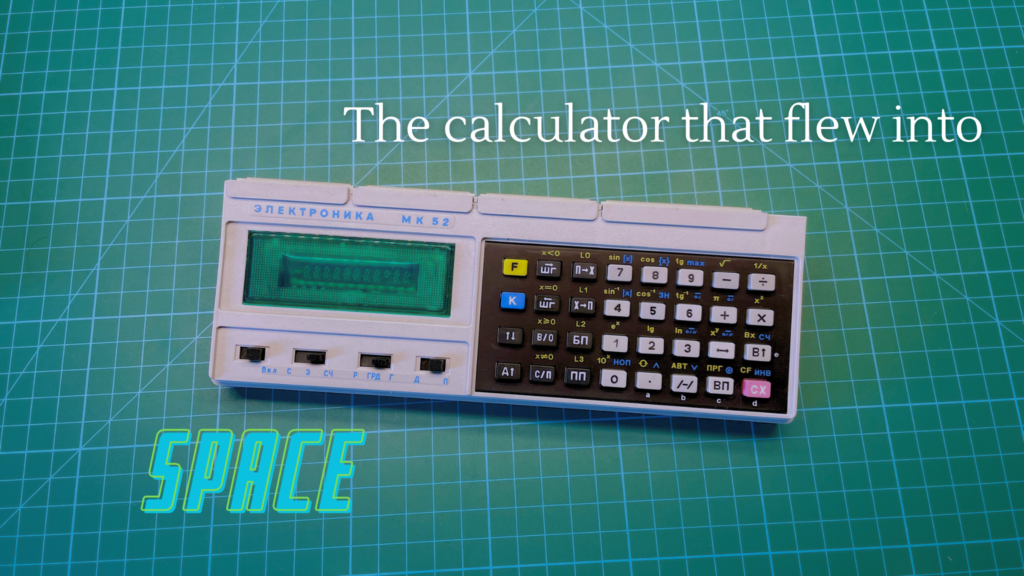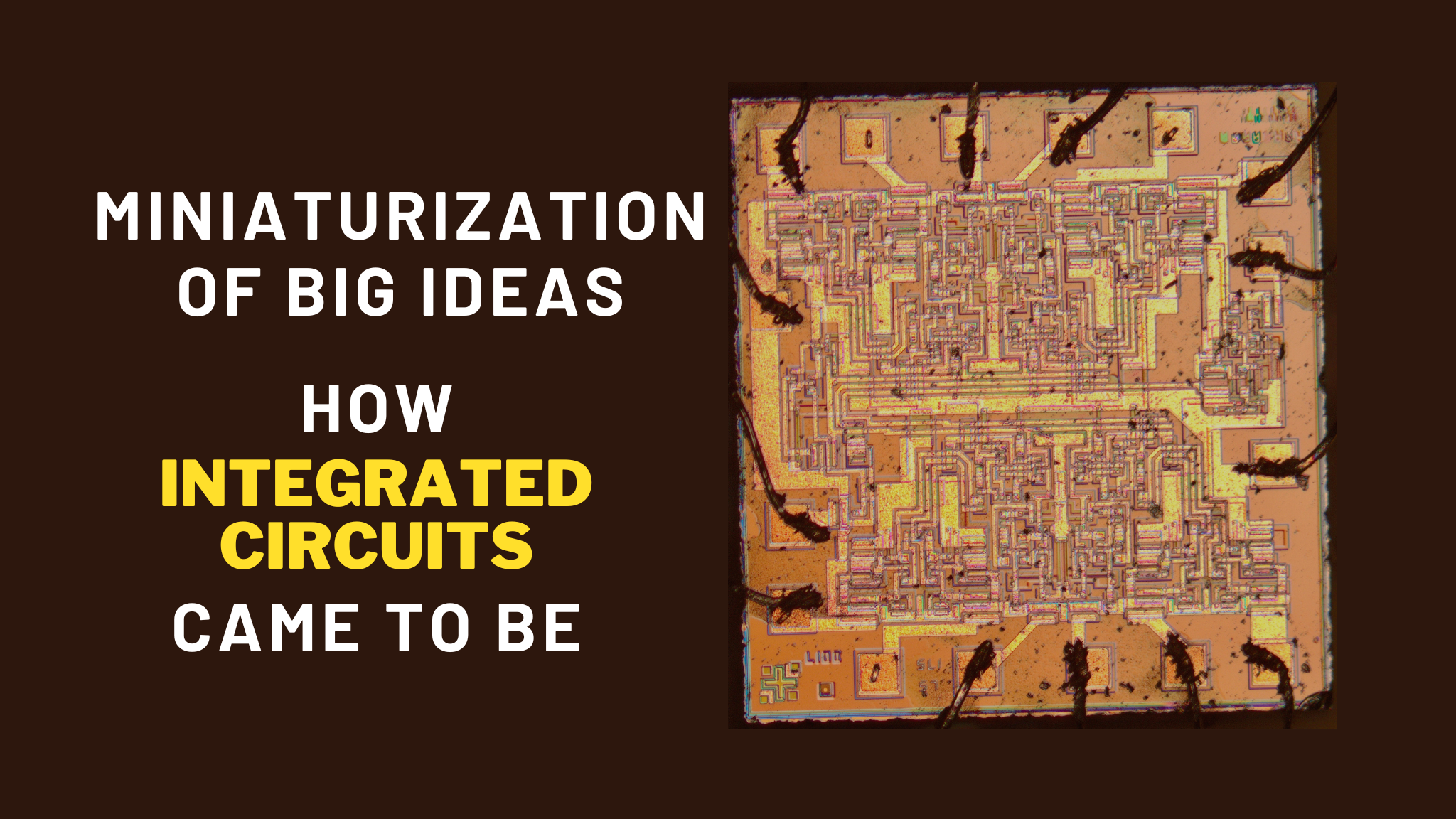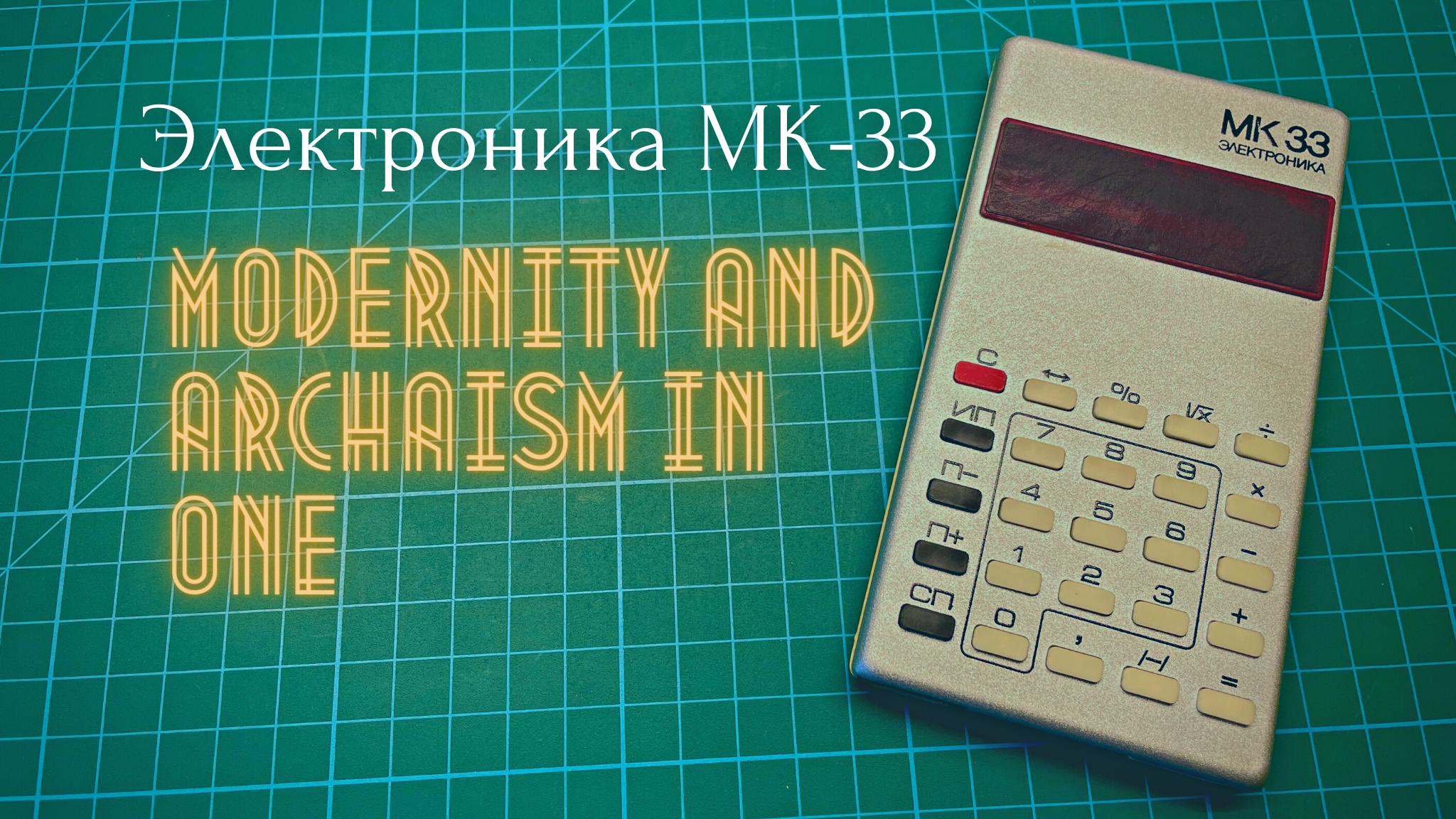The great events of the space industry not only capture our attention, but also inspire us to think about the achievements of science and technology. One of the fascinating aspects of the conquest of space is the role that technology has played in these spectacular achievements. However, in the shadow of the famous rockets, astronauts and space stations, there are little-known elements of this space history, such as the Soviet Электроника МК-52 calculator.
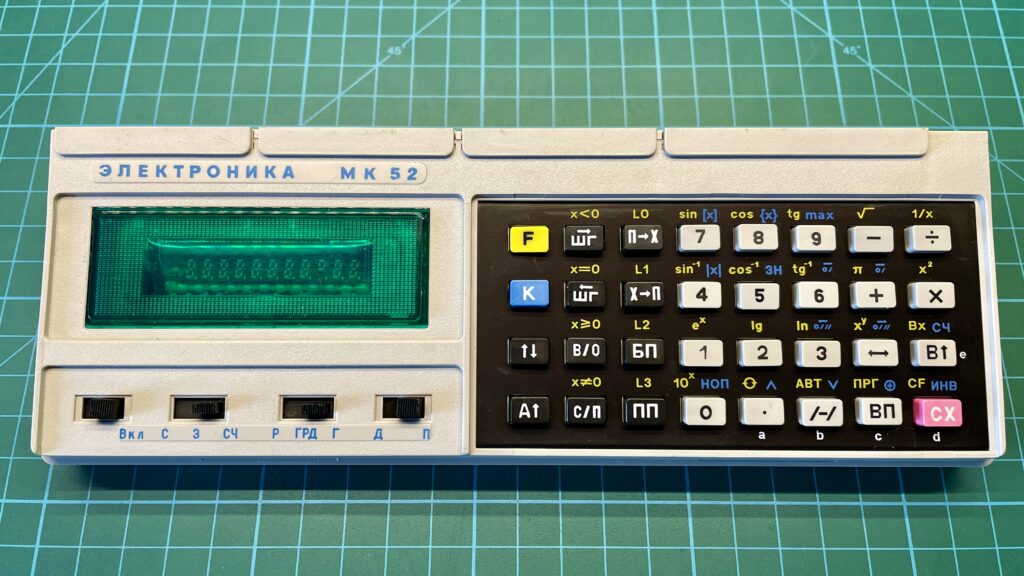
Электроника МК-52 (Elektronika MK-52) is a programmable calculator produced between 1983 and 1992 in the plants of the former Soviet Union. It is the equipment of the so-called “third generation,” that is, the third series of programmable calculators designed by the Russians. The first equipment of this type was the Elektronika B3-21 (Электроника Б3-21) released in 1977, while its successor, the Elektronika B3-34 (Электроника Б3-34) appeared in 1980.
Some of you may be wondering what a programmable calculator actually is and how it differs from ordinary designs. Well, a programmable calculator is one on which the user can run his own sequence of commands, that is, de facto write a program that the device will execute. With such a solution, it is much easier to solve complex and complicated mathematical problems, manual calculations would take much longer, not to mention that they would be prone to errors. The first programmable calculators such as the IBM CPC used punched cards, and it was from these that the executed sequence of commands was read. In time, magnetic tapes also began to appear, and later memory in the form of integrated circuits. Programming languages for calculators were initially quite a lot can be said that each manufacturer had its own. Today everything has become inevitably standardized. Although Elektronika’s MK-52 programming language was YMK-61, its commands and codes were fully compatible with second-generation calculators such as the B3-34 and MK-54.
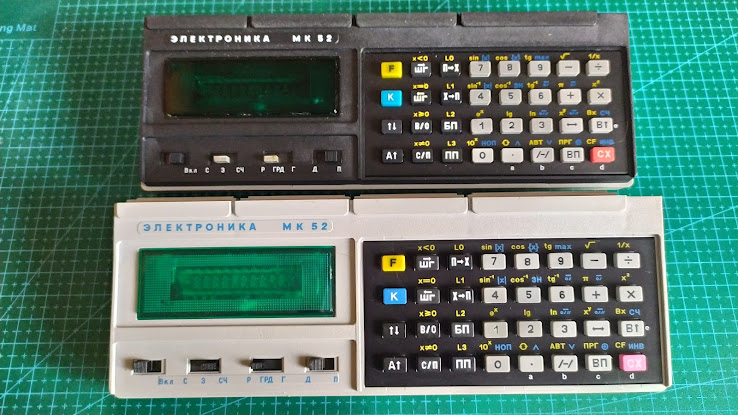
But let’s get back to our today’s hero, or actually heroes, because in my collection there are two copies of the MK-52. These devices were produced in two color versions – gray and black-gray, in addition to which there were also versions in blue and orange-black. The calculators were equipped with a lid to protect the top of the device. The plastic, as befits a Soviet design, crackles, but it must be said that the fit of the case components is quite good and there are no gaps.
The front of the device is divided into three areas – the display is separated by transparent green plastic, the buttons under the display allow you to turn on the device, select the unit for angles and manage memory. On the right side is placed the keyboard, the use of which is not pleasant. The keys have practically no pitch, so one is never sure if they have been pressed. The sponge separating the keys from the circuit board is responsible for this state of affairs. Unfortunately, its replacement is almost impossible. Электроника МК-52 has quite a lot of keys, as many as 32, practically each of which has three functions selected by a yellow button (F) and a blue button (K).
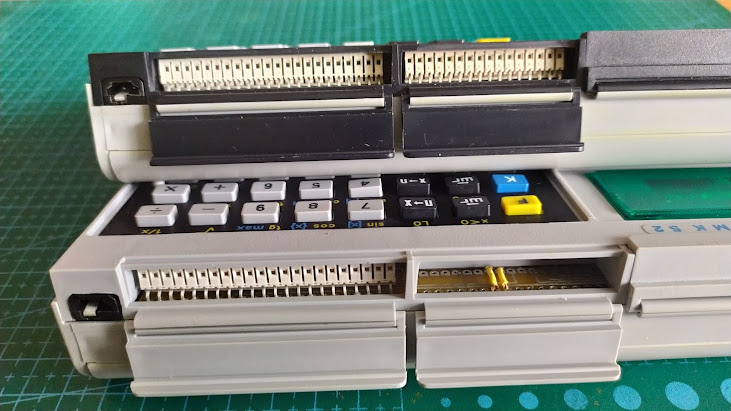
On the rear panel there were four opening caps, the first two of which protect, in turn, the expansion slot for external memory and the diagnostic connector used for testing during production. Interestingly, over time, many do-it-yourselfers managed to use them for other purposes and connect a printer, for example. However, it should be known that the installation of diagnostic sockets was not standard, there were copies such as the one in the gray casing, which do not have it. Only two small jumpers are visible.
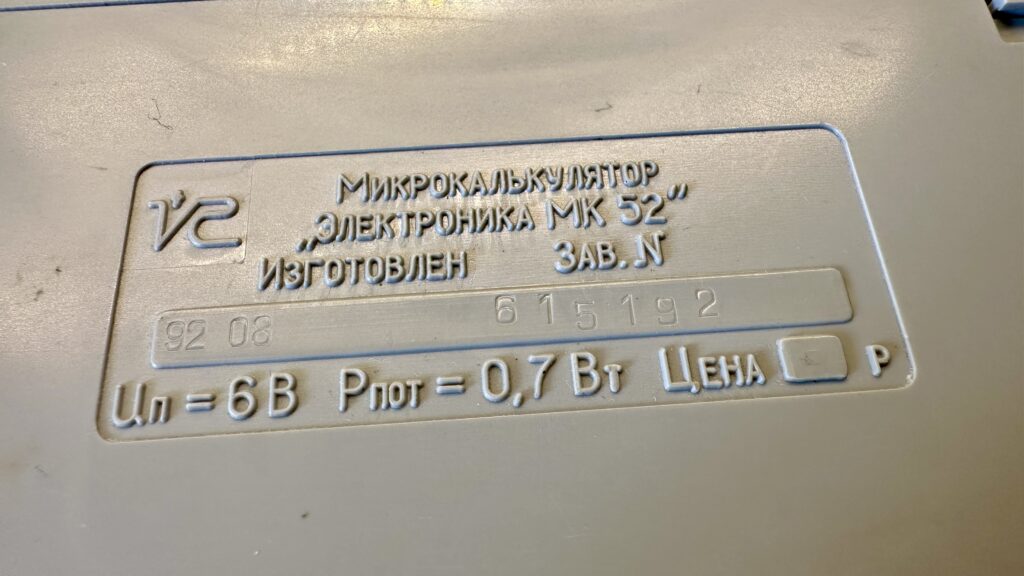
On the bottom of the calculator there is only a nameplate with information about the date of manufacture and the serial number of the device.

The capabilities of the Электроника МК-52 calculator are quite considerable, aside from handling a huge number of mathematical and logical functions. The device had 15 addressable registers, intended for user data. This calculator was also the first Soviet device equipped with a 5Kb internal non-volatile EEPROM memory. It made it possible to permanently store a program consisting of up to 105 instructions.

As I mentioned before, the calculator has a special slot for an expansion module. The user could plug in an external read-only ROM similar to today’s memory cards. The module could contain math programs, additional libraries, and games and home programs. A total of four such modules were created:
- BRP-2 “Astro” (Russian: БРП-2 “Астро”) Module allowed to run programs needed for navigation tasks. It was used on ships of the Soviet Navy and was not commercially available. A mention of it appeared in the 12th issue of the monthly Морском сборнике in 1988.
- BRP-3 (Russian: БРП-3) Module contained 60 mathematical programs and was sold for 16 rubles.
- BRP-4 (Russian: БРП-4) Produced in 1989, it included a set of games and sports programs.
- TWS “Geo” Module for handling advanced mathematical functions, it is described in the literature, but it is uncertain whether it really existed.






Soyuz TM-7 (http://www.spacefacts.de/mission/english/soyuz-tm7.htm)
Interestingly, Электроника МК-52 is a calculator that flew into space. The device, along with several expansion modules, was on board the Soyuz TM-7 spacecraft flying to the MIR stations (fall 1988 – spring 1989). The calculator was intended to help Aleksandr Volkov, the hero of the Soviet Union, with calculations related to celestial navigation in case the main computer failed. However, as far as is known, the device was not used.
The main problem of the calculator Электроника МК-52
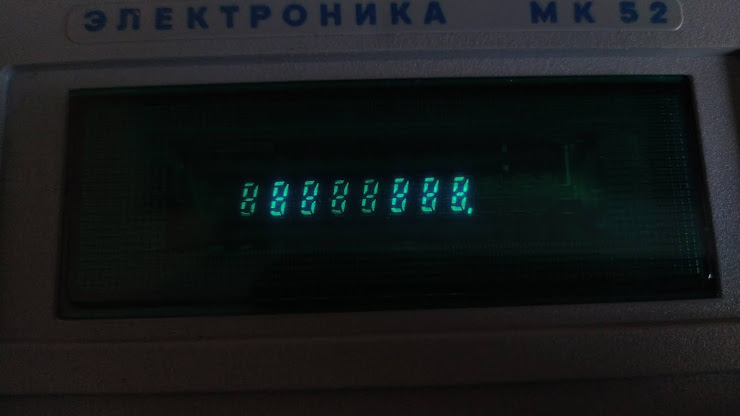
The main problem of MK-52 calculators, besides the clumsy keyboard mentioned early on, is the display. It is a vacuum fluorescent tube, which unfortunately begins to fail over time. What I mean here is that over time some of the digits begin to glow less brightly, and this is a common problem occurring in a great many copies. Unfortunately, the only thing that helps here is the replacement of the display, while finding a new piece is practically impossible, so only recycled parts remain.
What's in the kit?
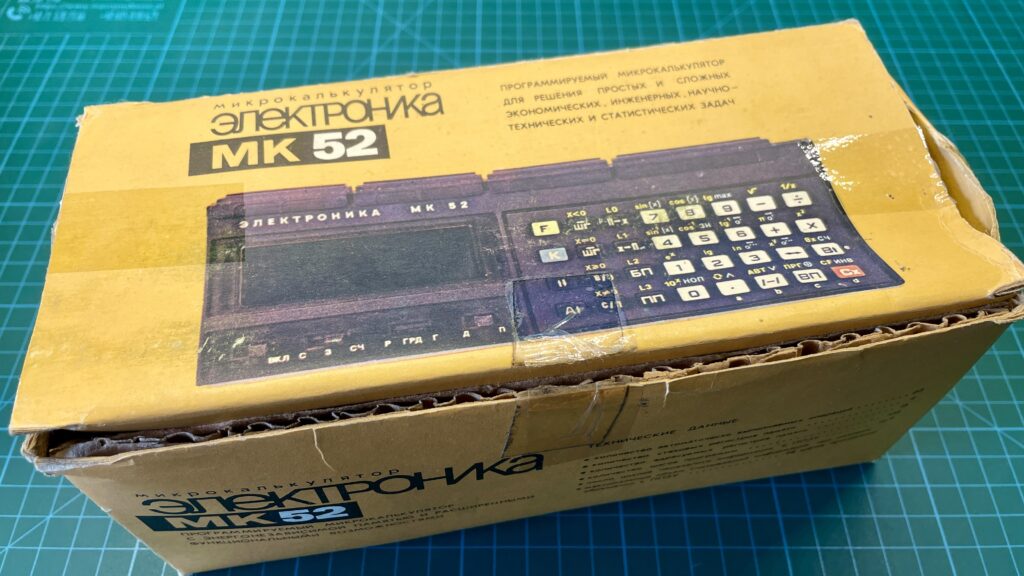
The original calculator was packaged in a small cardboard box, which is unfortunately already a bit damaged, but I am still impressed that it has survived to this day.
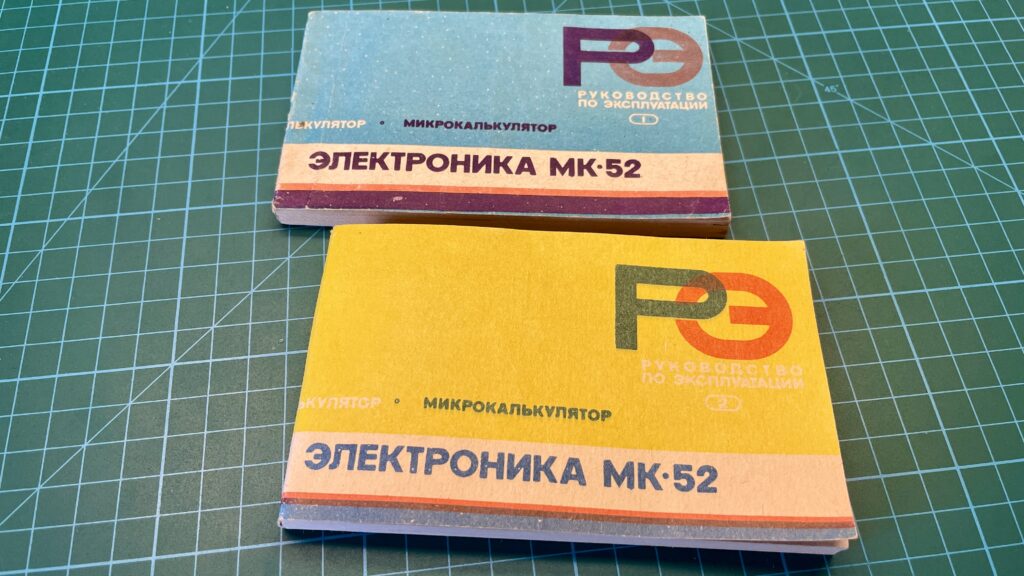
The calculator came with an instruction manual in two parts. These contain basic information and descriptions on how to perform specific mathematical calculations and logical operations.
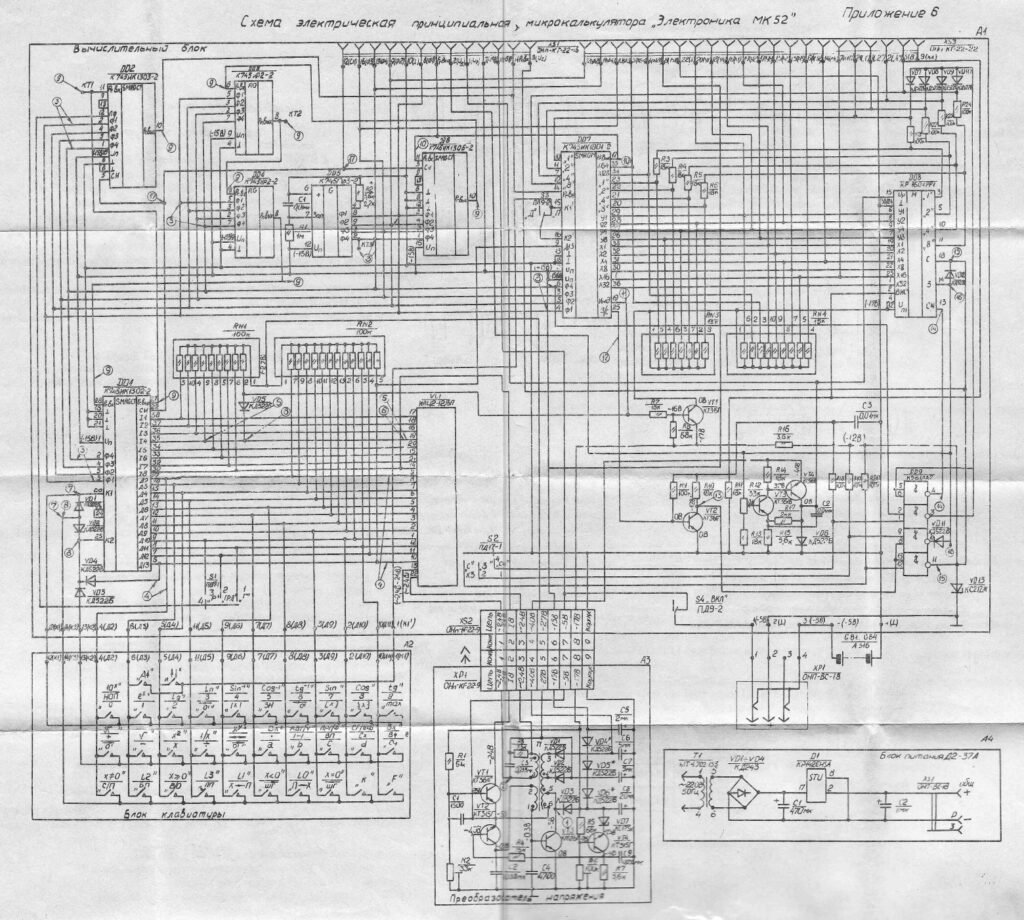
Also included is a diagram of the device. It was provided to the user so that he could repair the calculator with his own hands if necessary.
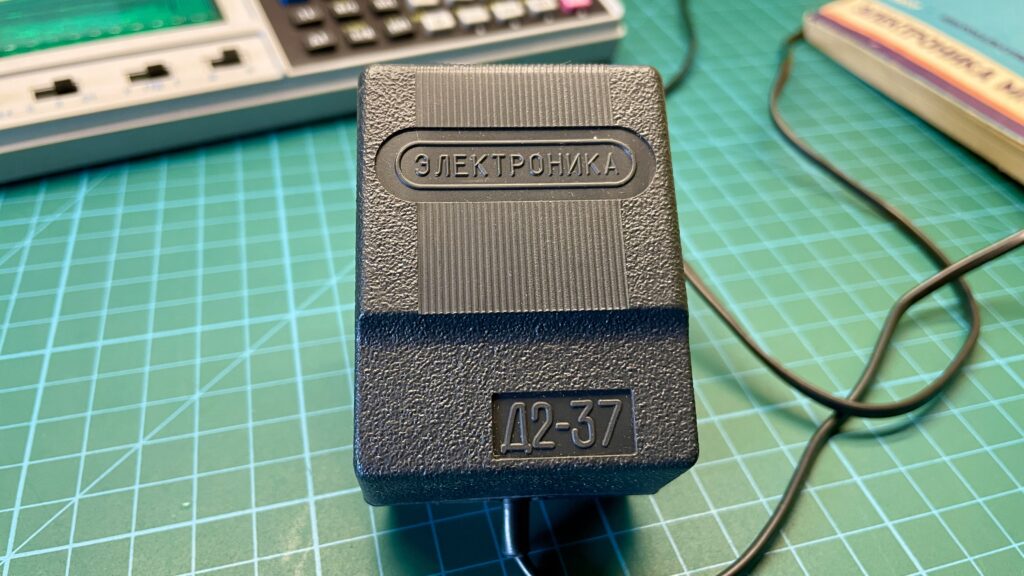
Also included in the box was a dedicated power supply for the calculator. The device can also run on 4 AA batteries.
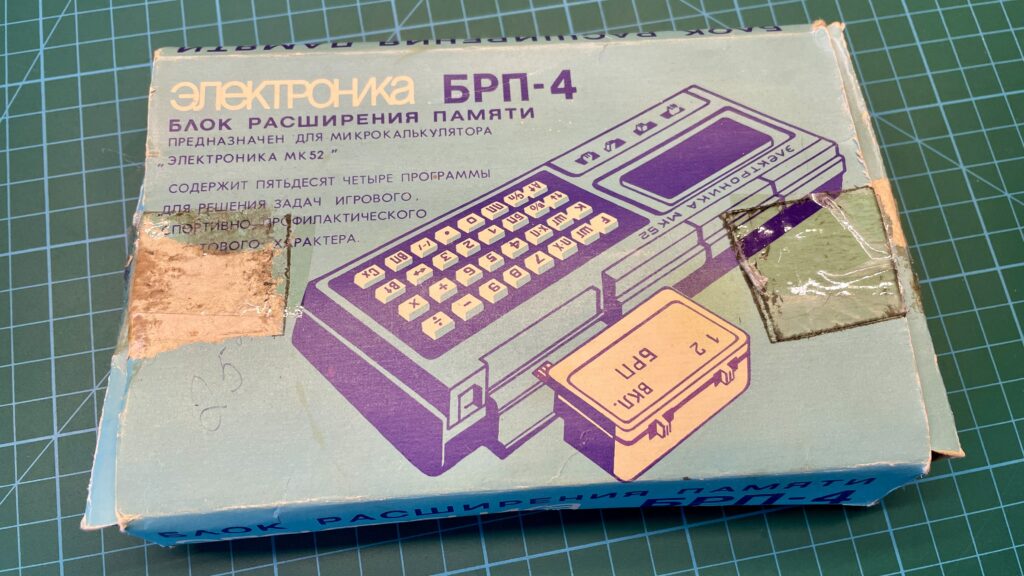
Also part of my collection is the aforementioned BRP-4 expansion module. It was placed in a separate non-blue box.
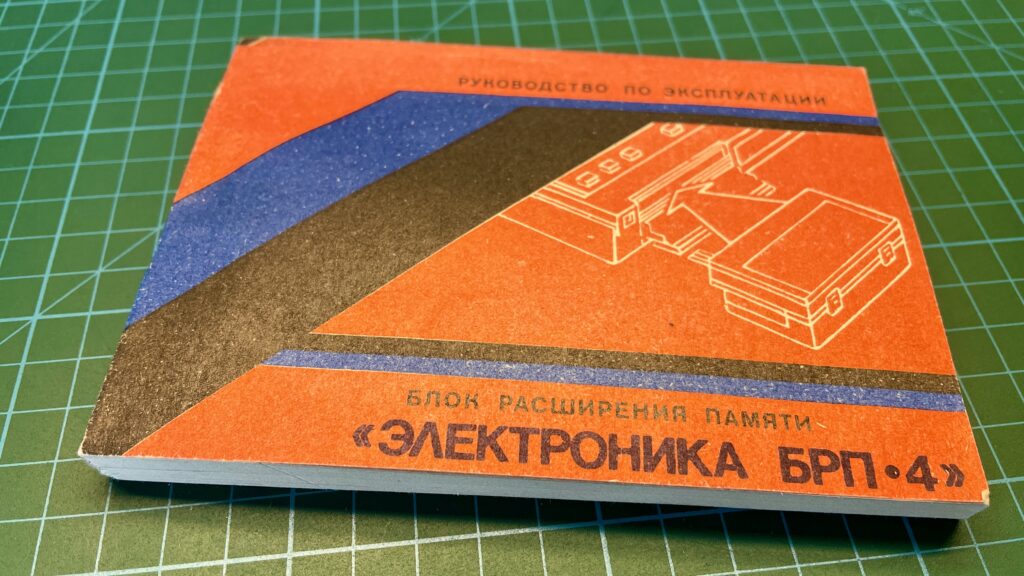
The module also has its own manual with a description of the saved programs.
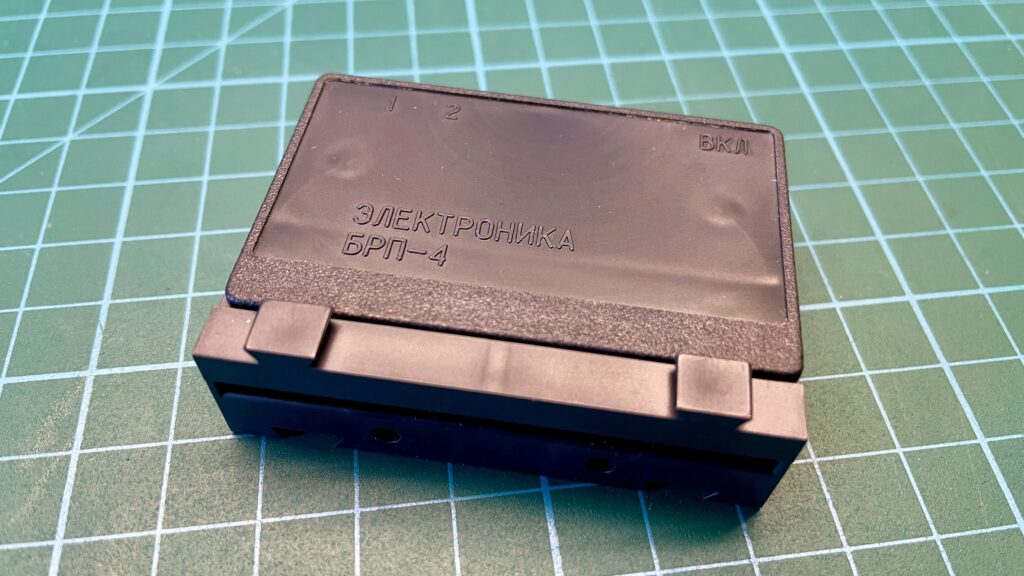
The module itself is small in size and is a black box with a row of leads. On the other side there are two buttons – the first allows you to turn on the module, while the second allows you to select one of two memory banks.
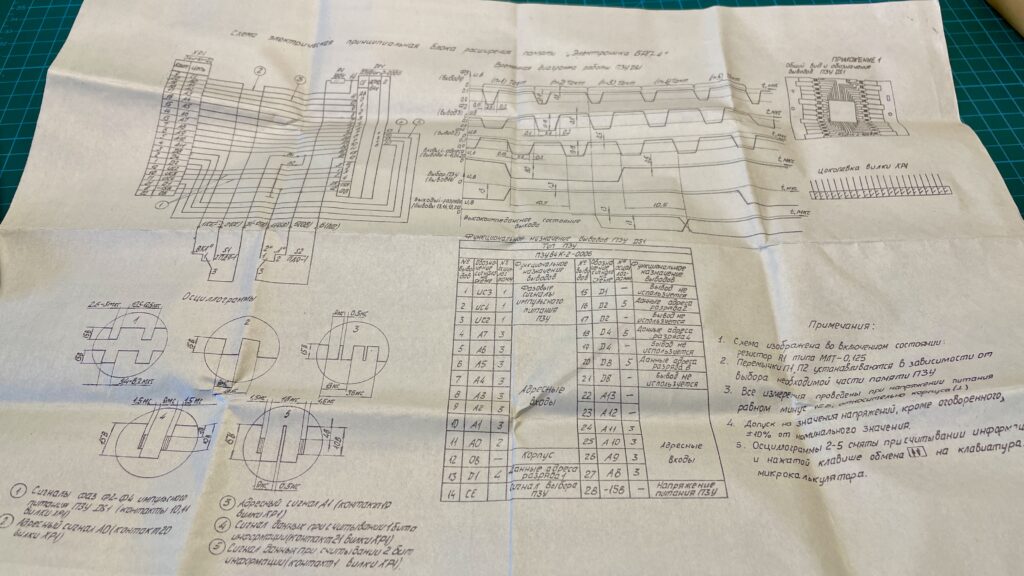
Electrical diagram of the expansion module.
A schematic of the memory module along with time waveforms is also part of the kit. Nowadays, it is in vain to find manufacturers adding such “unusual” additions to their devices.
Interior of Электроника МК-52.
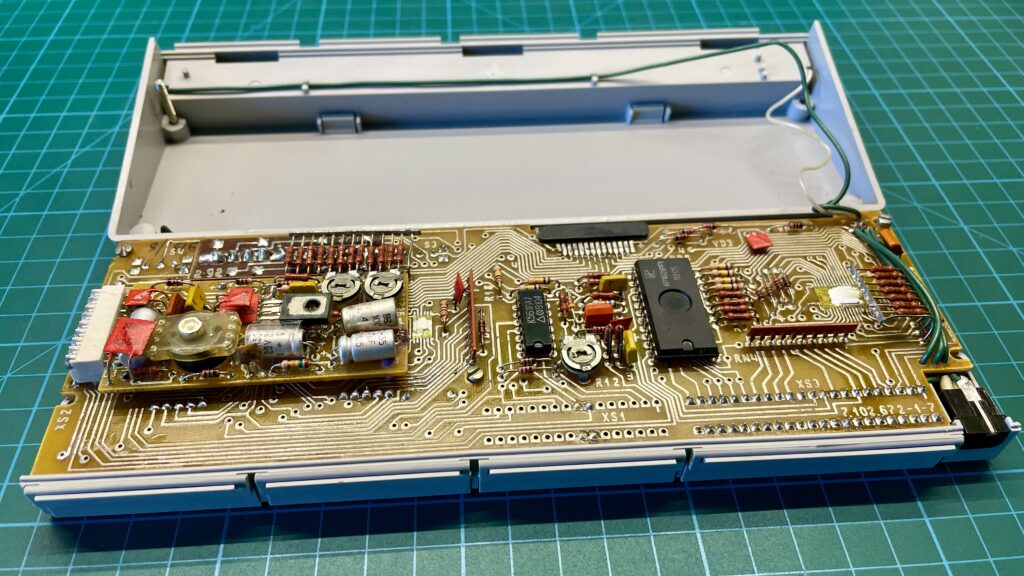
Wanting to look inside the calculator, you need to unscrew the two screws on its bottom. After opening the case, you can immediately see that the entire available space is occupied by the motherboard. Quite a few components are placed on it, but the most conspicuous is the high-voltage inverter module needed to operate the VFD display. It is located in the white socket on the left side. The largest IC on the board is the ROM storing the stored program, next to it there is also a smaller logic chip and several passive components.
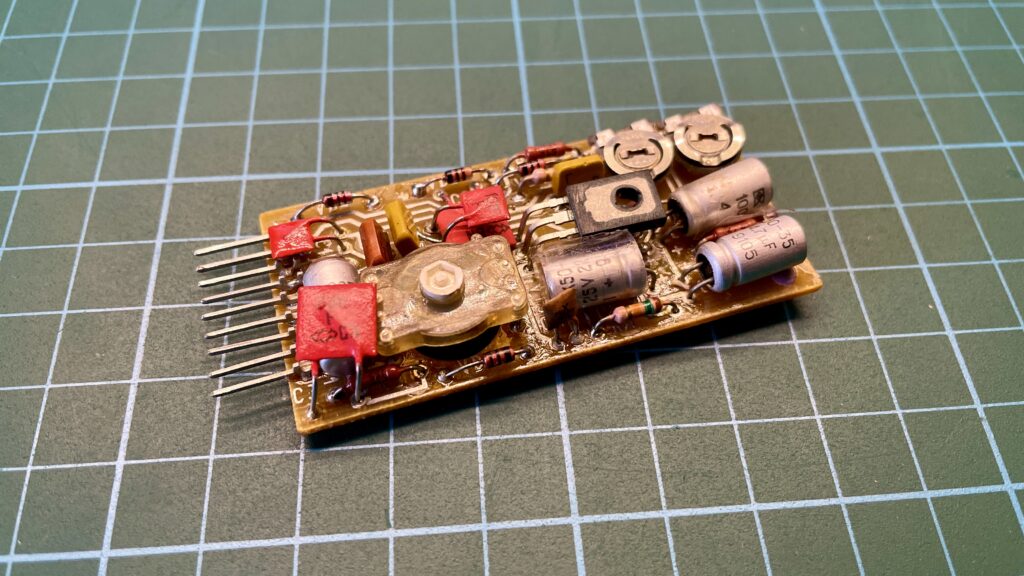
The inverter, located in the socket, can be easily removed. It was based on a small-sized transformer and a transistor. Its task is to produce the voltage of about 30V needed to properly drive the VFD display.
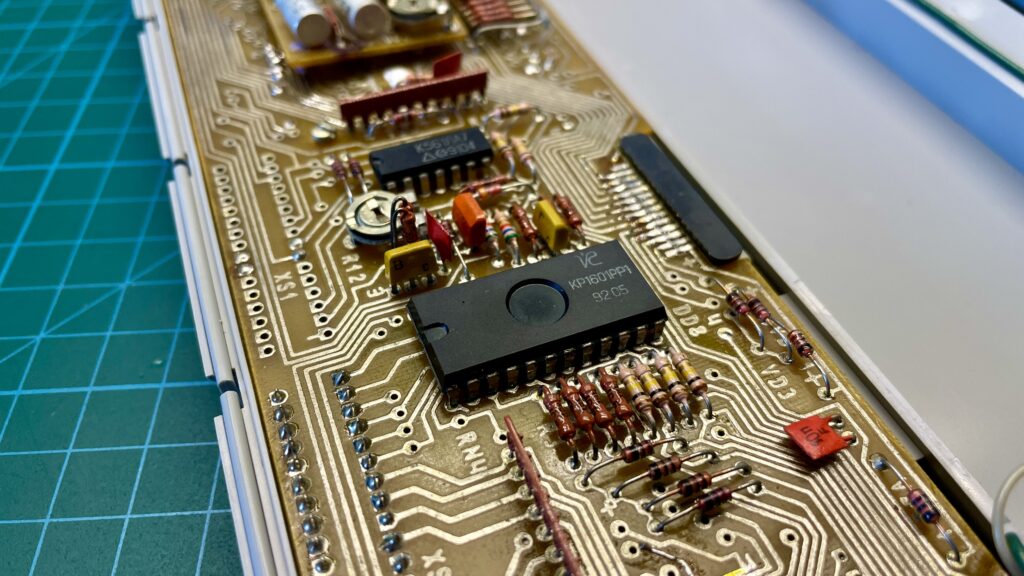
EEPROM memory is more precisely a module with an organization of 1024×4. It stores the program created by the user. Importantly, this memory is non-volatile and even when the power is disconnected, the data is still stored. The small discoloration in the oval cavity looks interesting, it is the outline of the silicon core placed deeper. Slightly higher you can see the K561LA7 chip, it is nothing more than a counterpart of the classic CD4011, that is, four two-input NAND gates. Analyzing the schematic of the device, you can see that these gates are used to generate a clock signal with a frequency of 75kHz.
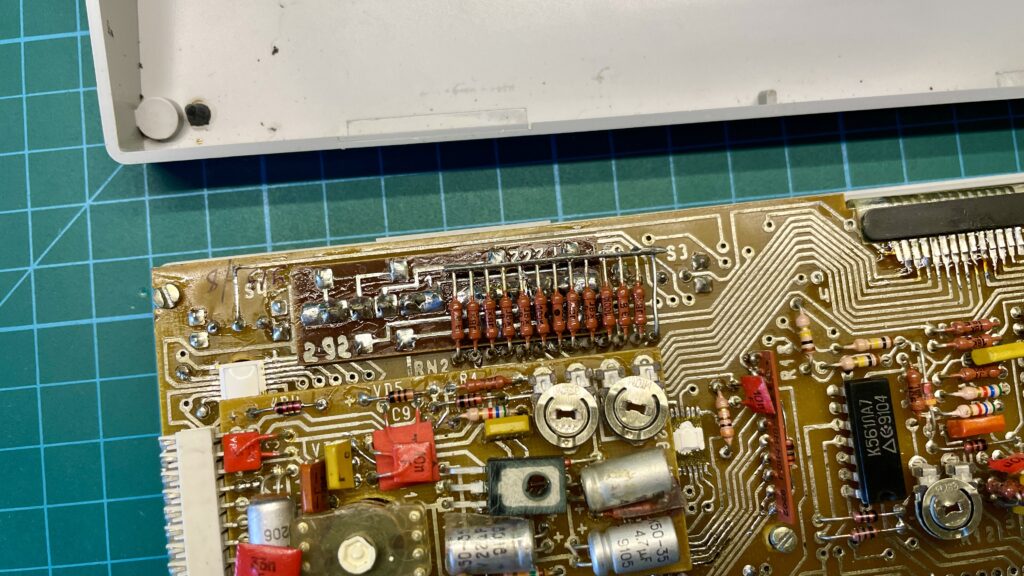
The designers of the MK-52 decided on a rather strange procedure. The function switches are soldered on an additional piece of laminate placed slightly higher on the motherboard. It’s hard to answer why this is so? One can only suspect that the switches used are too large, and in those years the economy of the Soviet Union could not solve such a problem.

Hidden at the right edge of the board is a certain interesting chip, which is most likely the main processor. The first thing that strikes the eye is, of course, its physical form, unfortunately I have not been able to determine exactly what type of housing it is. A silicon core protected from the outside by a white, soft silicone-like material has been placed on a rather flexible plastic somewhat similar to FFC tape.

Resistor ladders are also noteworthy. They do not take the form of the elements we are currently familiar with, but simply resistors connected together by a single sheet.
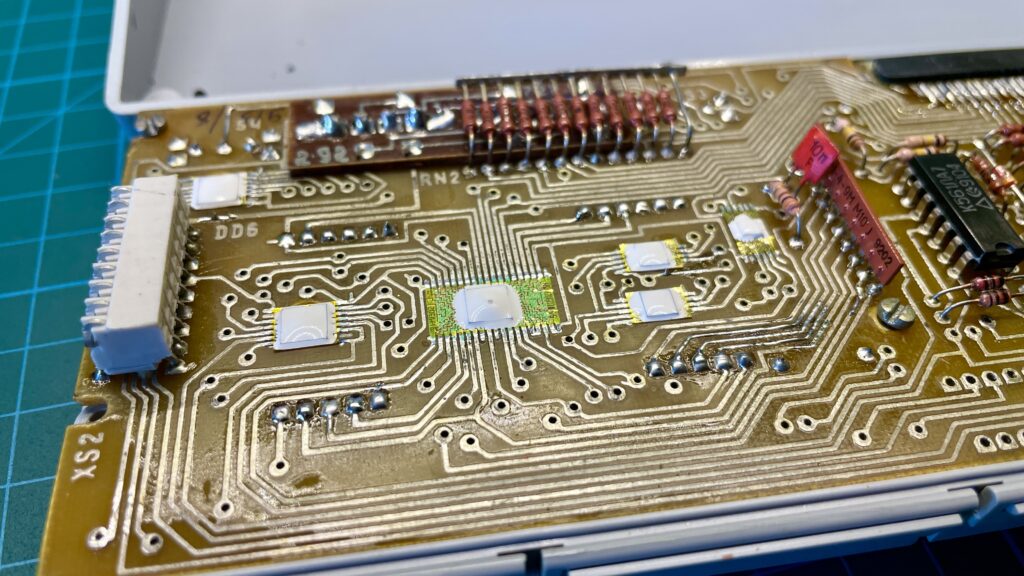
Underneath the inverter are more strange chips, there are exactly six of them, and they are most likely involved in the operation of the keyboard and display.
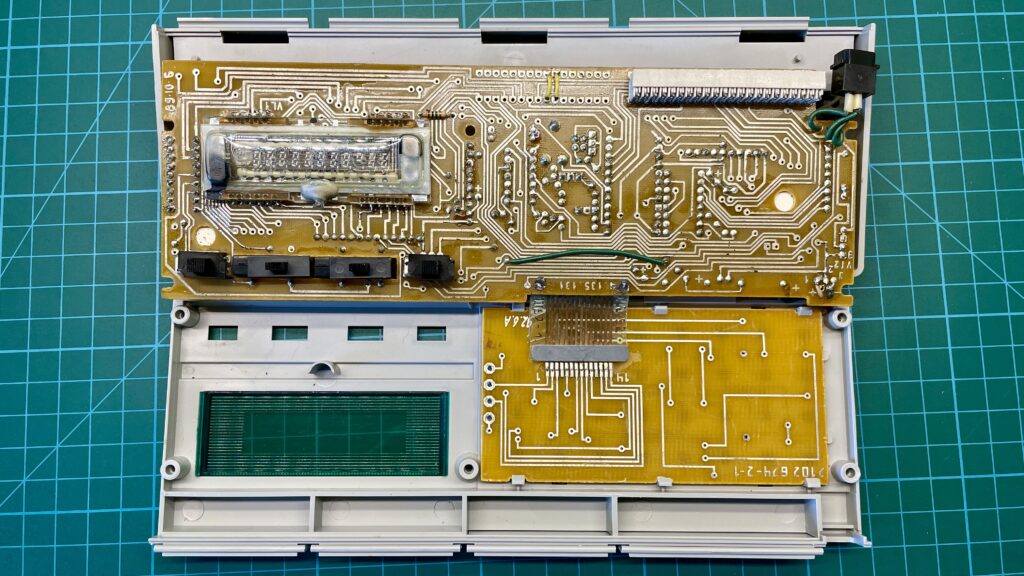
The motherboard is connected to the rest of the case with three screws, and once these are removed it can be safely removed. It is important not to damage the tape connecting the main circuit to the keyboard. It is not removable, although at first it may look like it. On the other side of the board are placed the switches and, of course, the display. The keyboard board is also visible, but I will not remove it, because inside there is the aforementioned sponge, now most likely in the form of dust.
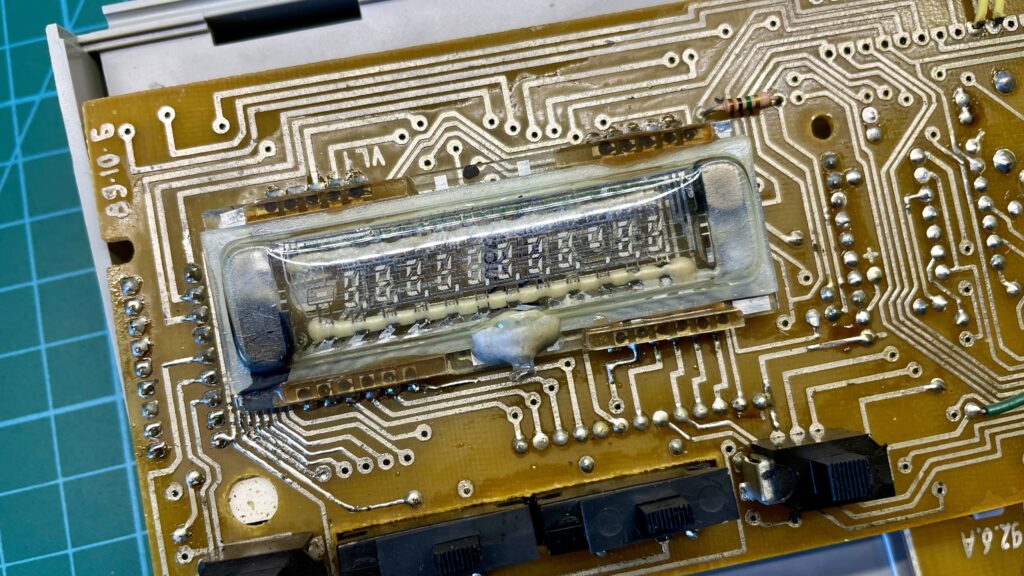
The display is a vacuum design capable of displaying ten digits and two special characters. The display leads are gathered into four groups located in the corners. Unfortunately, the exact designation of this design remains a mystery.
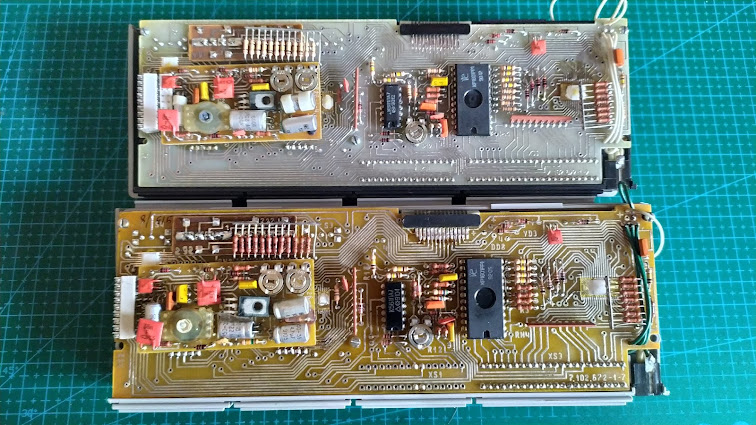
Since I own two copies of this calculator, I decided to compare the two boards. They do not differ too much, only the shade of the laminate is different and some of the passive components are placed in slightly different enclosures.
Inside the memory module
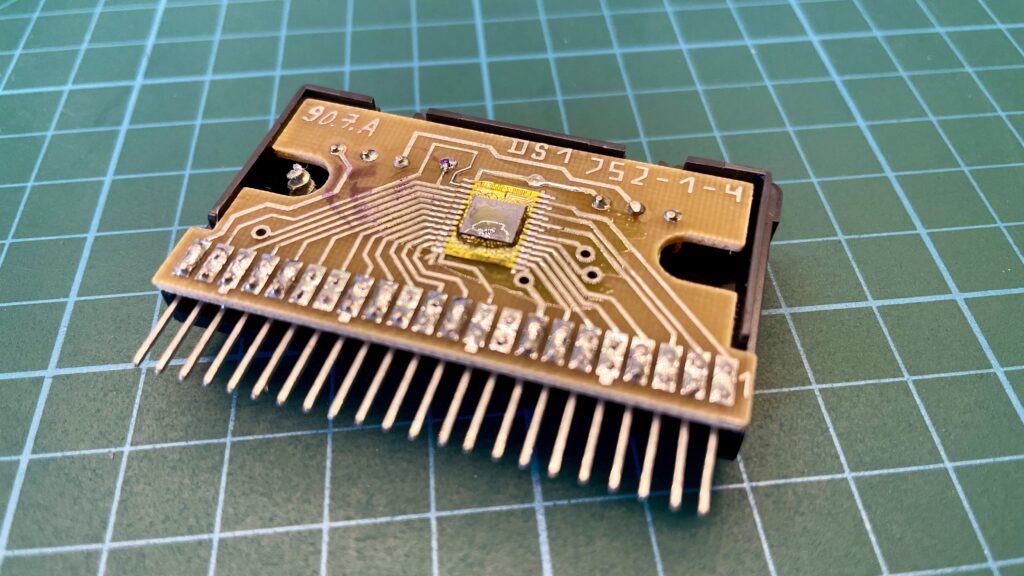
I also decided to look inside the memory module screwed with two screws. Inside was a single chip made similar to those inside the calculator. This chip is nothing more than an EPROM storing a previously stored program.
In today's dynamic world of electronics, we are constantly using advanced technologies that enable us to perform tasks faster, more efficiently and more conveniently. One of the most remarkable developments that has affected our daily reality is the invention of the integrated circuit. These small but powerful electronic components, typically containing hundreds, thousands or even millions of elements on a single silicon wafer. Chips have revolutionized our world in ways we could not even imagine before. But in order to explore the history of integrated circuits, we need to go all the way back to the 1920s, to the days of tube designs.
There are cases in which a manufacturer releases a device that is already obsolete on the day of its release, lacking modern solutions. An example of such equipment may be the Soviet calculator Электроника MK-33 (Elektronika MK-33), but are you sure?
Sources:
- https://ru.wikipedia.org/wiki/Электроника_МК-52
- https://elektronika.su/all/elektronika-mk-52/
- https://habr.com/ru/articles/710622/
- http://www.spacefacts.de/mission/english/soyuz-tm7.htm
